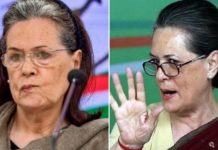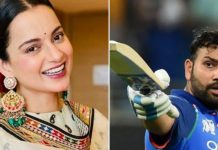
After section 377 was revoked in a landmark judgement by the Supreme Court in 2018, there has been a lot of debate and discussion. I won’t deny that I have been a part of many such discussions. Though I am no subject expert on the matter, it was intriguing to see people’s reactions post the judgement. In a very popular local group for moms, some women raised concerns on how were they going to raise the next generation? What are they going to say to their children and how it is blasphemous to go against our culture. We cannot let go of our “sabhyata” and “sanskriti.” If you are wondering, I am here to start another debate, please stick together till the end. I am going to take you back to our roots. Yes, our very history is extremely liberal. For all those who believe our culture is heterogeneous, patriarchal and rigid, and to those having a tough time ‘raising’ the ‘millennials,’ let’s revisit our roots together.
Let’s start from the beginning of time, shall we?
So, before Lord Brahma started making people, he had a dilemma. He couldn’t imagine the equal balance for the male energy in the world. It was a difficult decision; the counterpart had to be equally magnanimous, fierce yet gentle to balance the “Purush.” It was then, that Lord Shiva took the form of “Ardhanarishvara” (half man-half woman) and appeared in front of Brahma. On seeing Shiva’s Ardhanarishvara form, Brahma found synergies between the sexual forces of nature and came up with feminine energy i.e. Prakriti. Shiva’s Ardhanarishvara form is mentioned in the Mahabharata as well as the Siva Purana. And we have the proof of the Ardhanarishwar structures in many of the famous temples in India. This form taken by Lord Shiva is the perfect balance of male and female energy. You see androgyny is nothing new or western, it always had been there.

Last year I tried to relook at the character of Draupadi from a feminist lens, as I feel that she was a feminist. There have been many such strong feminist characters in our epics, but we never really headed them any importance. Thanks to our modern mythological authors like Chitra Banerjee Divakaruni and Devdutt Pattanaik whose endeavour has been to bring out those unheard voices. History has always been told from a man’s perspective. In fact, the very word history means “his” story.
I was bashed for not having read the Vedas or actually “misinterpreting” it. Some said I was trying to draw an analogy that was meaningless, especially in the name of feminism. I know it for a fact that people do have a problem with feminists. They always had problems accepting a woman’s voice. Anyway, I would like to tell my trolls that if they have read the Mahabharata, they would know that Arjun took the form of a eunuch in the thirteenth year of their exile when all the Pandavas and Panchali were hiding in disguise.
It is one of the oldest and a very important reference to eunuchs. He took refuge in the harem of a king’s court teaching music and dance. How many of you actually knew this? It has never been a part of the popular culture stories that we have read or seen in our childhoods. Arjun has always been portrayed as a warrior. His disguise was a very important facet of his character. Eunuchs were important and trusted caretakers of the harems of the kings. Women of the palace had no threat from them, hence they were entrusted with the responsibility of looking after the queens while the men were away, on wars. The transgender people were among the people who the kings trusted the most. They had normal responsibilities and lived among us. We never marginalise them or shun them away.
Source: Shethepeople


































